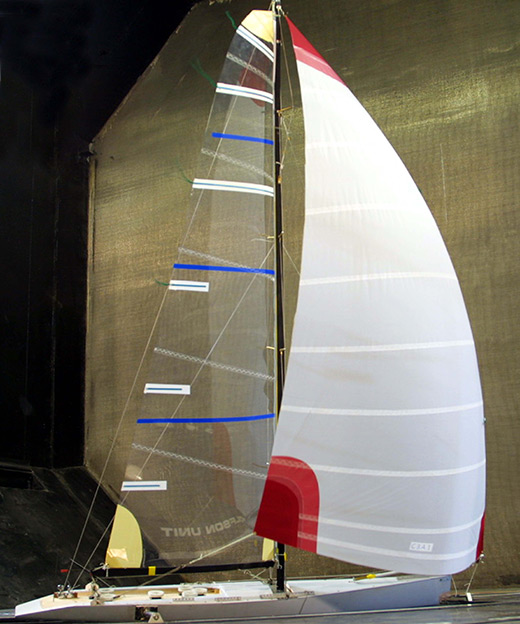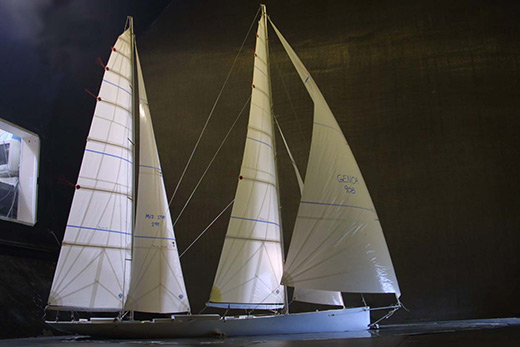Sailing yacht Aerodynamics
Since its inception in 1967 the Wolfson Unit has used the wind tunnels to predict and refine the performance of sailing yacht sail plans and nearly all successful yachts use physical model tests to confirm the final designs.
Since the turn of the century the size and complexity of private superyachts has increased to the extent that testing of these yachts has become almost routine, and indeed the challenges in designing a successful 100m sailing yacht match those of designing a racing yacht.
Gathering experimental data is only the start of the process, to impact meaningfully on the design specific effects must be teased out of the data, and these are then used for performance prediction studies.
The Wolfson Unit performance prediction software WinDesign6 has developed over the years to keep pace with the widening scope of experimental data that designers need to process.
Also assembling the drawings and attending the model tests offers a great opportunity to create meaningful interactions within the project team at an early stage.

Sail wardrobe development - Dubois Yacht Design ‘Genuine Risk’

Wind tunnel sail development for ‘67m Hetarios Ketch’ - Dykstra Naval Architects
Typical programmes
- On hulls and keels: using the University of Southampton R. J. Mitchell Wind Tunnel with a working section 3.5m wide x 2.6m high x 9.1 m long.
- Measurements of forces and moments on keels, rudders and foils at large (1:2) scale.
- Flow visualisation experiments to map streamlines and check flow characteristics.
- Laser Doppler Anemometer measurements for interpretation and CFD validation studies.
- Study of mast sections and head foil profiles using two dimensional test techniques.
- Fully rigged vessels: using the University of Southampton No.2 Wind Tunnel, low speed section, which is 4.8m wide x 3.2m high x 3.0m long.
- Tests on complete models of hull and rig using purpose built dynamometry and remote control sheeting system.
- Derivation of basic sail force coefficients for performance studies.
- Evaluation of effect of rig proportions on rating and performance.
- Study of the effect of sail shape on performance of offwind sails and optimisation of sheet leads.
- Wind tunnel tests can be used to develop multi-masted rigs with practical yet efficient sail plans.
- Establish the rig centre of effort for helm balance calculations.
- Establish knockdown wind loads for rig strength calculations and stability.
